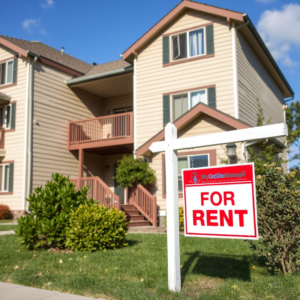In today’s economic landscape, securing affordable housing has become an increasingly daunting challenge, particularly for those earning minimum wage. The rising cost of living, coupled with stagnant wage growth, has left many workers struggling to find rental options that fit within their limited budgets. While the general rule of thumb suggests that housing costs should not exceed 30% of a person’s income, minimum-wage earners in many parts of the country find this threshold nearly impossible to meet.
The Affordability Crisis
The federal minimum wage in the U.S. stands at $7.25 per hour, translating to an approximate monthly income of $1,257 before taxes for a full-time worker. In stark contrast, the national median rent for a one-bedroom apartment hovers around $1,558—far beyond what a minimum-wage worker can afford without spending a disproportionate share of their earnings on housing. To meet the recommended affordability standard, these individuals would need to find rental housing costing no more than $377 per month, a figure that is virtually nonexistent in most urban rental markets.
The affordability crisis extends beyond major metropolitan areas and into mid-sized cities and suburban regions, where housing costs have also risen due to increasing demand and limited supply. This ongoing disparity between wages and living expenses highlights the urgent need for policy reforms, wage increases, and expanded access to affordable housing initiatives.
Cities Offering Relative Affordability
Despite these challenges, some cities in the U.S. still offer relatively affordable rental options for minimum-wage earners. While these locations may not fully meet the ideal affordability standards, they provide a more manageable cost of living compared to high-cost urban centers like New York City, San Francisco, or Los Angeles.
1. Buffalo, New York
- Minimum Wage: $15 per hour
- Average One-Bedroom Rent: $1,001
- Percentage of Minimum Wage Income Spent on Rent: 39%
Buffalo stands out as one of the more affordable cities for minimum-wage workers. While the rent-to-income ratio remains above the recommended 30% threshold, it is significantly lower than in many other urban areas. Additionally, Buffalo’s cost of living is relatively low, making it a viable option for workers seeking affordability without sacrificing access to urban amenities.
2. St. Louis, Missouri
- Minimum Wage: $12 per hour
- Average One-Bedroom Rent: $933
- Percentage of Minimum Wage Income Spent on Rent: 39%
St. Louis has long been recognized for its affordable housing market. With a minimum wage higher than the federal standard and relatively low rental prices, the city offers a more feasible living situation for low-income earners. St. Louis also provides various housing assistance programs and affordable rental units that help ease the financial burden on minimum-wage workers.
3. Hartford, Connecticut
- Minimum Wage: $15.69 per hour
- Average One-Bedroom Rent: $1,130
- Percentage of Minimum Wage Income Spent on Rent: 41%
Hartford is another city where minimum-wage earners can find relatively affordable housing. While the cost of rent remains slightly high, the state’s elevated minimum wage helps mitigate some of the financial strain. Additionally, Hartford boasts a variety of public housing options and rental assistance programs aimed at supporting low-income residents.
4. Minneapolis, Minnesota
- Minimum Wage: $15.57 per hour (for large employers)
- Average One-Bedroom Rent: $1,149
- Percentage of Minimum Wage Income Spent on Rent: 41%
Minneapolis offers a higher minimum wage than many other U.S. cities, which helps offset the cost of renting. The city’s commitment to affordable housing initiatives and tenant protections also makes it a more viable option for workers earning lower wages. Various programs exist to assist renters, including rent control measures and housing subsidies.
The Broader Economic Implications
The ongoing gap between wages and rental costs raises concerns about economic sustainability for low-income workers. While some cities offer more affordable rental options, the reality remains that many minimum-wage earners must work multiple jobs or seek government assistance to cover basic living expenses.
The federal minimum wage has not increased since 2009, despite the fact that the cost of rent has surged by 64% over the same period. Inflation has further eroded purchasing power, making it even more challenging for workers to afford basic necessities, let alone save for the future. To address these issues, policymakers must consider strategies such as:
- Raising the Minimum Wage: Adjusting wages to keep pace with inflation and housing costs would allow workers to afford basic living expenses more comfortably.
- Expanding Affordable Housing Initiatives: Increased funding for public housing, rental assistance programs, and subsidies could help bridge the gap between income and rent.
- Implementing Rent Control Measures: Enforcing rent stabilization policies in high-cost areas could prevent excessive rental price hikes.
- Encouraging Employer-Supported Housing Benefits: Employers could play a role in providing housing stipends or discounts to employees struggling with housing costs.
Conclusion
While cities like Buffalo, St. Louis, Hartford, and Minneapolis provide relatively more affordable rental options for minimum-wage earners, the broader issue of housing affordability remains a national concern. Addressing this crisis requires coordinated efforts from policymakers, employers, and housing developers to ensure that all workers have access to safe, stable, and affordable housing.
For those struggling with rental costs, exploring alternative housing options, seeking local assistance programs, and considering shared housing arrangements may provide temporary relief. However, lasting solutions will require systemic changes that prioritize fair wages, affordable housing, and economic equity.
Source: The Most Affordable US Cities for Renters Making Minimum Wage

